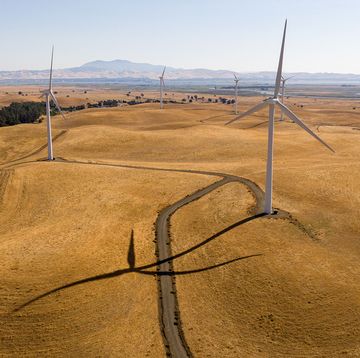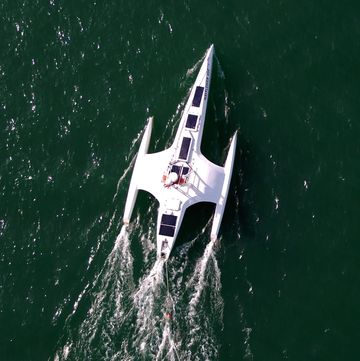Using solar power and what they refer to "super sponges," a team of engineers at the University of Texas at Austin have developed a neat, and potentially life-saving, magic trick: pulling water out of thin air.
The sponges are actually hydrogels, gel-polymer hybrid materials that are designed to hold and contain substantial amounts of water. The Texas team focused on combining the abilities of an especially absorbent hydrogel known as hygroscopic polypyrrole chloride with one that is reacts to heat called isopropylacrylamide. It's a mouthful, but the two melded together are able to function in both humid and dry weather conditions and have been proven to pull water out of the atmosphere.
Machines have utilized atmospheric water before, like the FreshWater machine from Chile. These hydrogels have also been used for absorption— hygroscopic compounds are typically used in refrigeration. In fact, the team created something similar in 2018, a solar-powered water purification innovation using hydrogels that cleans water from any source. But by using the water that already exists in the atmosphere, the team was able to improve on their own work and existing tech.
Given the increased threat of drought across the globe due to climate change, the 50,000 cubic kilometers contained within the atmosphere are a tempting target for relief. Prototypes showed daily water production of up to 50 liters per kilogram of hydrogel.
“We have developed a completely passive system where all you need to do is leave the hydrogel outside and it will collect water,” said Fei Zhao, a postdoctoral researcher and co-author of the study, in a press statement. “The collected water will remain stored in the hydrogel until you expose it to sunlight. After about five minutes under natural sunlight, the water releases.”
The research team led by Guihua Yu has already moved to patent the machine. With future advances, the technology could replace existing solar-powered water purification systems. The paper discussing the study's findings has been published in the journal Advanced Materials.
Source: University of Texas
David Grossman is a staff writer for PopularMechanics.com. He's previously written for The Verge, Rolling Stone, The New Republic and several other publications. He's based out of Brooklyn.













